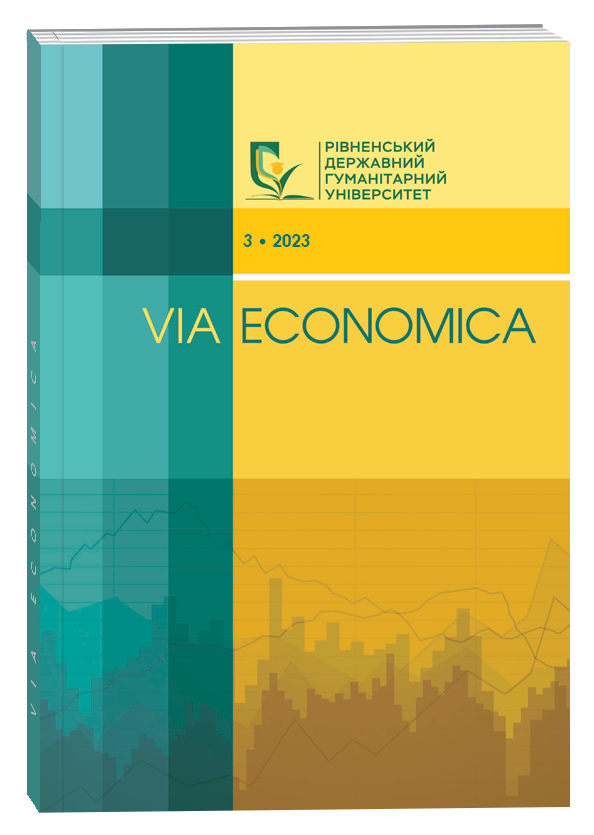MODELING OF THE BUSINESS PROCESS "ASSESSMENT OF EFFICIENCY OF EMPLOYEES OF THE PROJECT OFFICE OF THE OUTSOURCING COMPANY" IN BPMN NOTATION
Abstract
The efficiency of the staff is a critical success factor for any organization, especially in the field of outsourcing, where the quality of services directly depends on the productivity of employees. Therefore, the task of improving employee evaluation systems of outsourcing companies, in particular responsible project offices, is urgent. The purpose of the article is to develop a hybrid multi-criteria model and a corresponding business process for assessing the effectiveness of the staff of project offices of outsourcing companies. The integration of modern approaches: the 360-degree method, fuzzy modeling, genetic algorithms and BPMN is proposed. This makes it possible to comprehensively take into account the assessments of stakeholders, formalize expert judgments, optimize parameters and form a formalized model of the assessment process. The developed multi-criteria model includes indicators of speed, quality, independence, teamwork and communication. With the help of a 360-degree survey, quantitative assessments are collected from managers, colleagues, customers, etc. These data are formalized using the apparatus of fuzzy logic, linguistic variables and production rules. The Mamdani algorithm is used to obtain degrees of belongingness of estimates to fuzzy terms. The genetic algorithm optimizes the parameters of the membership functions. The result is an integral indicator of employee efficiency. For the practical application of the model, a BPMN diagram of the process of staff evaluation of project offices has been developed. It allows you to analyze the company's existing practice and identify ways to optimize it. The theoretical significance of the work lies in the substantiation of a complex approach to the modeling of complex socio-economic processes based on a combination of traditional and intellectual methods. Practical value - in the development of a toolkit to increase the validity of personnel assessment and formalization of the relevant business process in companies. The developed approach can be applied in other subject areas.
References
Молодова Е.В. Управління людським капіталом як основа інноваційного розвитку. Вісник Одеського національного університету. Серія: Економіка. 2015. Т. 20. Вип. 3. С. 126–129.
Reddy W.B., Vaz A.B. Understanding 360-degree feedback systems. The Journal for Quality and Participation. 1997. Vol. 20. № 2. P. 34–38.
Петюх В.М., Цимбалюк О.А. Основи управління персоналом: навчальний посібник. Київ : КНЕУ, 2014. 398 с.
Zadeh L. Fuzzy sets. Information and control. 1965. Vol. 8, No. 3. P. 338–353.
Прокопенко В.І., Шевченко Г.М. Моделювання системи оцінки персоналу з використанням теорії нечітких множин. Радіоелектроніка, інформатика, управління. 2008. № 2. С. 140–146.
Гвініашвілі Т. З. Оцінка персоналу з використанням нечітко множинної моделі. Вісник НТУ "ХПІ". 2012. № 51. С. 68–73.
Ємельянова О.Ю. Моделювання рейтингової оцінки персоналу апаратом нечіткої логіки. Вісник ЖДТУ. 2010. № 4 (54). С. 160–163.
Шабанова Н.О. Гібридна інтелектуальна модель оцінки персоналу. Вісник НТУ «ХПІ». 2013. № 24 (997). С. 141–150.
Міщенко С.Г. Гібридна модель оцінювання персоналу. Вісник Нац. техн. ун-ту "ХПІ": зб. наук. пр. Сер.: Стратегічне управління, управління портфелями, програмами та проектами. 2018. № 2. С. 46–52.
Прокопенко О.В., Скрипченко Д.А. Гібридна модель оцінювання персоналу на основі нечітких KPI. Вісник Нац. ун-ту "Львівська політехніка". Менеджмент та підприємництво в Україні: етапи становлення і проблеми розвитку. 2017. № 869. С. 108–114.
Кузьмін О.Є. Основи менеджменту. Київ : Академвидав, 2011. 416 с.
Матвієнко О.В. Моделювання бізнес-процесів із застосуванням ARIS-методології. Бізнес-Інформ. 2014. № 1. C. 218–223.
Репін В.В. Бізнес-процеси. Моделювання, аналіз, управління. Київ : Мандарин Паблішинг, 2013. 512 с.
Король І.Г. Нечітка логіка та штучні нейронні мережі. Львів : Видавництво Львівської політехніки, 2010. 184 с.
Klir G.J., Yuan B. Fuzzy Sets and Fuzzy Logic: Theory and Applications. Upper Saddle River: Prentice Hall, 1995. 574 p.
Zadeh L.A. Fuzzy sets. Information and Control. 1965. Vol. 8. P. 338–353.
Nguyen H.T., Walker E.A. A First Course in Fuzzy Logic. Boca Raton: CRC Press, 2006. 336 p.
Molodova E. V. (2015) Human capital management as a basis for innovative development. Bulletin of Odesa National University. Series: Economics, no. 20(3), pp. 126–129.
Reddy W. B. & Vaz A. B. (1997) Understanding 360-degree feedback systems. The Journal for Quality and Participation, no. 20(2), pp. 34–38.
Petyukh V. M. & Tsymbalyuk O. A. (2014) Fundamentals of personnel management: textbook. Kyiv: KNEU.
Zadeh L. (1965) Fuzzy sets. Information and Control, no. 8(3), pp. 338–353.
Prokopenko V. I. & Shevchenko G. M. (2008) Personnel assessment system modeling using fuzzy set theory. Radio Electronics, Computer Science, Control, no. (2), pp. 140–146.
Gvinishvili T. Z. (2012) Personnel assessment using a fuzzy set model. Bulletin of NTU "KhPI", no. (51), pp. 68–73.
Emelyanova O. Yu. (2010) Modeling of personnel rating assessment using fuzzy logic. Journal of ZSTU, no. (4), pp. 160–163.
Shabanova N. O. (2013) Hybrid intelligent model of personnel assessment. Bulletin of NTU "KhPI", no. (24), pp. 141–150.
Mishchenko S. G. (2018) Hybrid model of personnel assessment. Bulletin of NTU "KhPI", no. (2), pp. 46–52.
Prokopenko O. V. & Skripchenko D. A. (2017) Hybrid model of fuzzy KPI-based personnel assessment. Bulletin of Lviv Polytechnic National University, no. (869), pp. 108–114.
Kuzmin, O. Ye. (2011) Fundamentals of Management. Kyiv: Akademvydav.
Matviyenko O. V. (2014) Business process modeling using ARIS methodology. Business-Inform, no. (1), pp. 218–223.
Repin V. V. (2013) Business processes. Modeling, analysis, management. Kyiv: Mandarin Publishing.
Korol I. G. (2010) Fuzzy logic and artificial neural networks. Lviv: Lviv Polytechnic Publishing House.
Klir G. J. & Yuan B. (1995) Fuzzy sets and fuzzy logic: theory and applications. Upper Saddle River, NJ: Prentice Hall.
Zadeh L. A. (1965) Fuzzy sets. Information and Control, no. 8, pp. 338–353.
Nguyen H. T. & Walker E. A. (2006) A first course in fuzzy logic. Boca Raton, FL: CRC Press.


